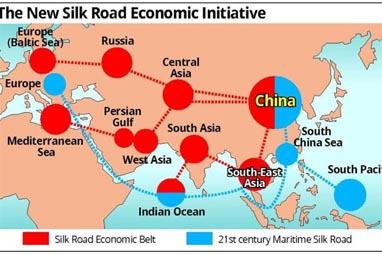China is rebuilding the ancient Silk Road in an effort to boost its economy. Just two weeks ago a 32-container train was shipped from Wuyi, China to Tehran, Iran. This new Silk Road shortened the typical ship-based travel time by 30 days! This connection is among the first visible signs of a massive trade network that China is currently constructing across Eurasia.
This is gigantic for the trading industry. Almost $1 trillion of future investments have already been announced. China’s trade network would span over 60 countries that are home to over 4.4 billion people. That’s more than half of the world’s population.
What you can expect:
The new Silk Road will be broken up into two different components. The Silk Road Economic Belt, which is the land component, as well as a sea component The Maritime Silk Road. This transportation system will reach from China to the far reaches of Eurasia, connecting Chinese harbors to Europe and the South Pacific.
A project like this will take some massive funding. Beijing has already started a $40 billion “Silk Road Fund” and has already helped fund hydroelectric power project in Russia. There’s also a newly created $100 billion Asian Infrastructure Investment Bank where China controls 26% of the votes. Some are assuming that this will help finance the “Belt”. The China Development Bank announced back in June that it would be investing $890 billion dollars over 900 One Belt, One Road projects across 60 countries.
Why rebuild The Silk Road?
There are two main reasons why China would rebuild this massive transportation network. The first being that China is facing significant overcapacity in its steel and construction sectors. Building things like ports, rails, and roads will help deploy some of these resources.
Investing abroad could also strengthen the economies of their trading partners while securing a future demand for Chinese goods and services. Domestic labor costs have been rising as well. Increased trade networks could help Chinese firms offshore manufacturing more efficiently.

